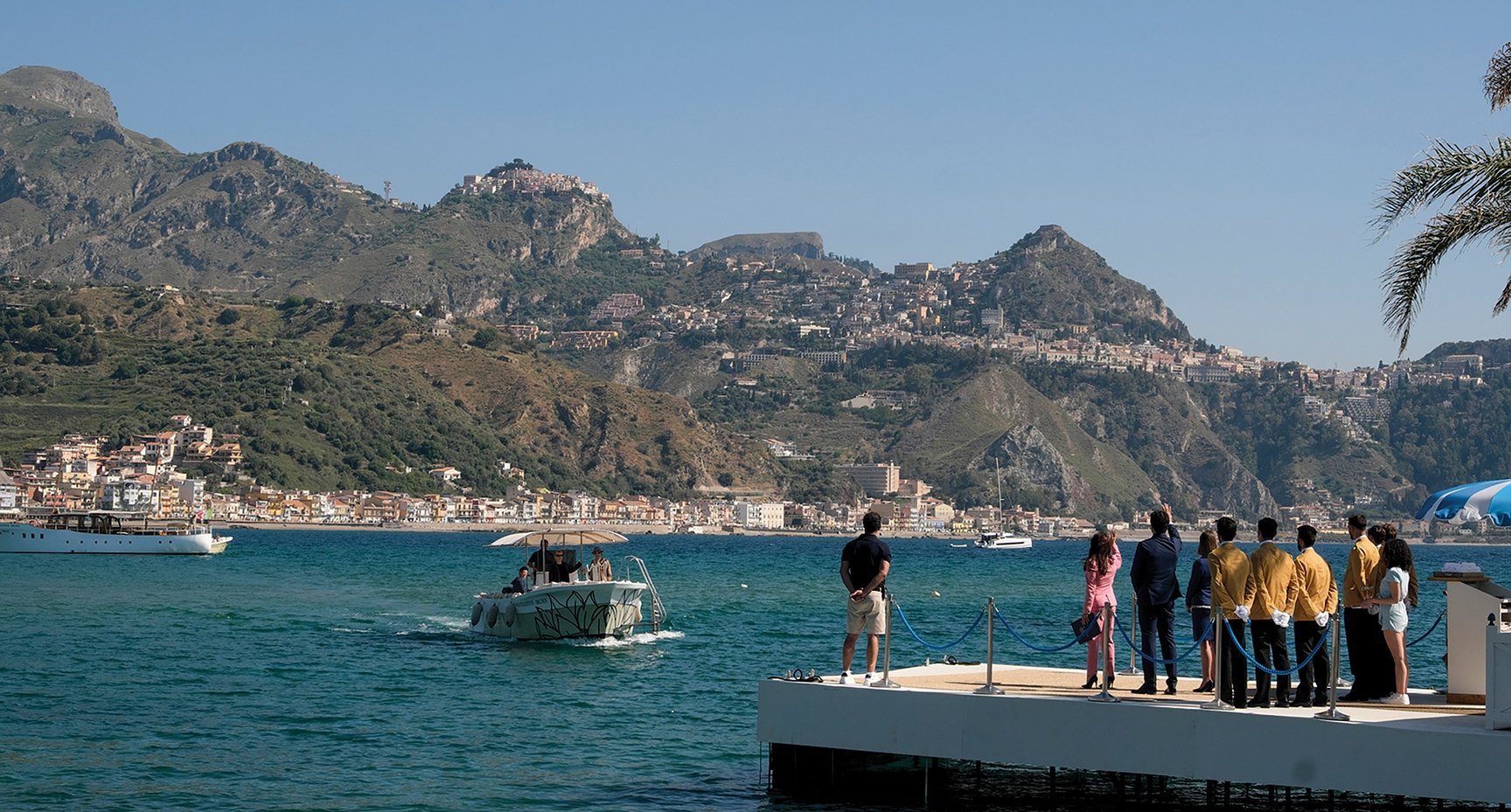
Exploring Locations and Emotions on The White Lotus
Series creator Mike White and cinematographer Xavier Grobet, ASC, AMC break down their approach to Season 2.
The White Lotus creator Mike White had many reasons to look forward to the series’ second season. There was, of course, the opportunity to build upon the social satire’s celebrated first season, which scored 20 Primetime Emmy nominations and won 10 of the statuettes. There was also the promise of taking a mostly new, equally flawed cast of characters to a new setting.
Whereas Season 1 followed affluent guests staying at a luxury hotel in Hawaii, Season 2 would unfold on an island a world away: Sicily. And the only returning characters would be Tanya (Jennifer Coolidge) and her husband, Greg (Jon Gries).
Season 2 also offered White a reunion with a treasured collaborator, cinematographer Xavier Grobet, ASC, AMC. The pair met on the set of Jared Hess’ Nacho Libre, which White co-wrote and Grobet shot (AC June ’06), and over the next decade, they teamed on both seasons of White’s series Enlightened and his feature Brad’s Status. Grobet’s recent credits include his Emmy-nominated work on the series Watchmen.
Ben Kutchins served as cinematographer on the first season of The White Lotus, “and he did a wonderful job,” White says. “He wasn’t available for the second season, but Xavier was, which was exciting. My collaboration with Xavier is one of the longest I’ve had over the years.
“These TV series can have schedules that are brutal,” he adds. “They go on forever, and by the end, someone like Xavier is like a war buddy. I would take a bullet for him — maybe not in the heart, but in the leg!”
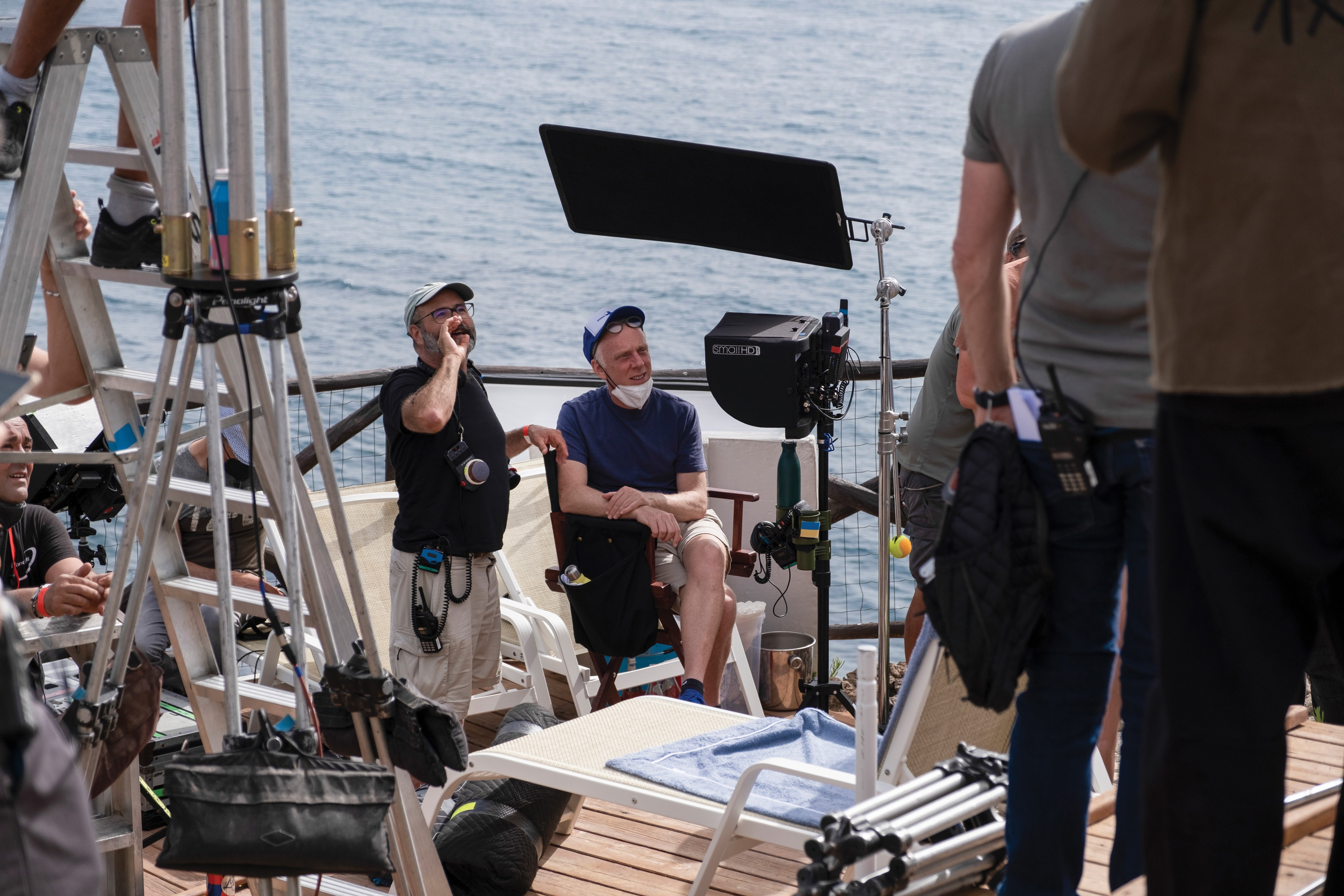
Exploring Possibilities
During prep for the 100-day shoot in Italy, White and Grobet spent several weeks exploring what the new season could look like. It was important to Grobet to ground the visual style in the look established in Season 1, while also making the most of the new locale. “Looking at the aesthetics of the first season, it’s all about lush color and beauty,” the cinematographer says. “There is so much to shoot in Sicily, and this season was written to explore all of these various places there. In the first season, pretty much everything happened in the hotel, whereas here, we had the freedom to go on day trips to these incredible locations, which opened up everything tremendously.”
A Cinematic Homage
One such day trip leads two characters, Harper (Aubrey Plaza) and Daphne (Meghann Fahy), to the town of Noto. During prep, Grobet had rewatched Antonioni’s L’Avventura, shot by Aldo Scavarda partially in the San Domenico Palace hotel (now a Four Seasons) in Taormina — the same location that serves as the “White Lotus” resort on the show. Grobet also realized that the characters’ trip would feature the same town plaza in Noto where Antonioni and Scavarda filmed a memorable sequence in which Monica Vitti is surrounded and gawked at by local men.
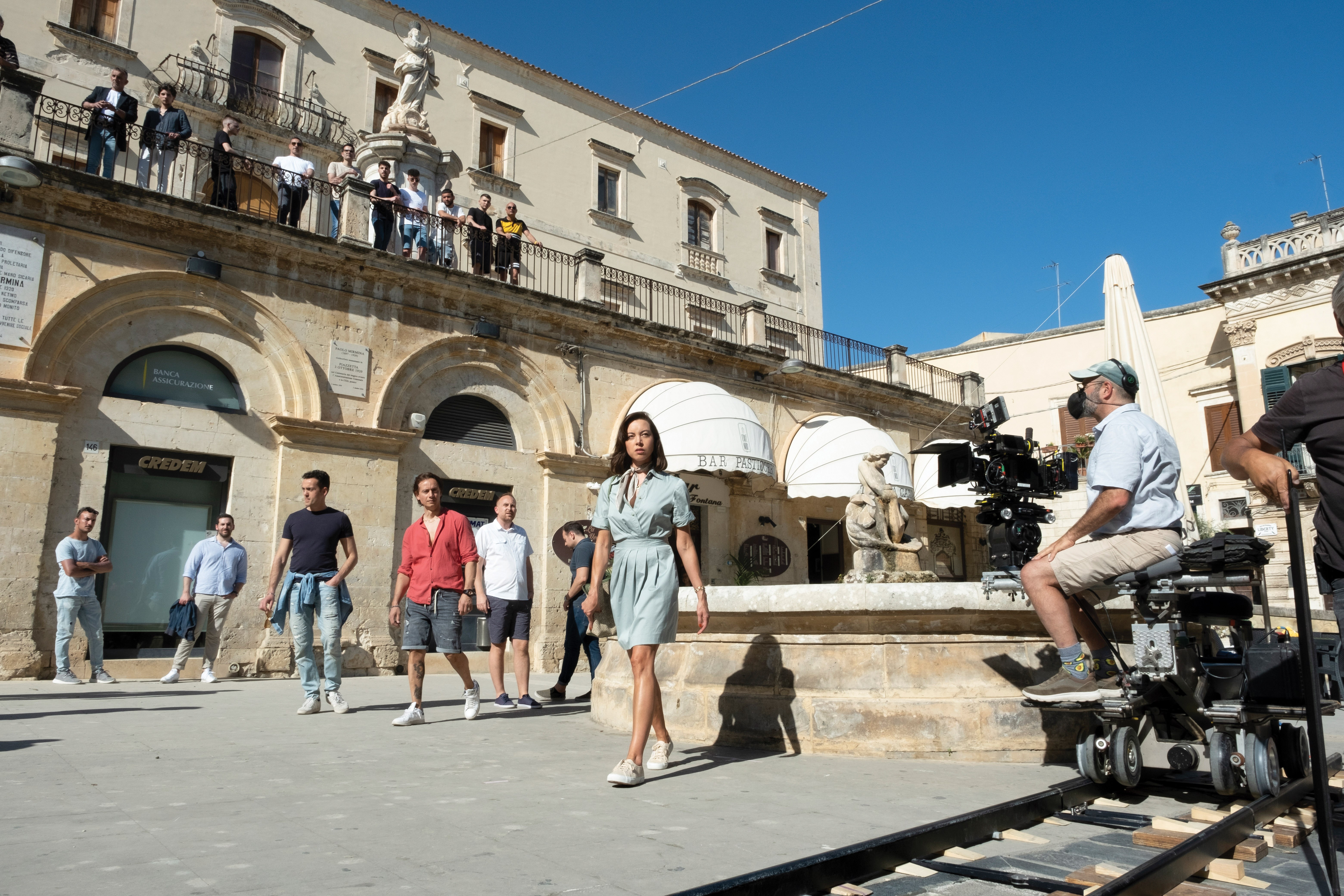
White recalls that when Grobet showed him the iconic sequence, his response was, “‘We have to just do that!’ There’s just such a rich cinematic history in Italy. Even though this is a television show, we wanted to give it a real cinematic feel.” The team decided to re-create the sequence almost exactly.
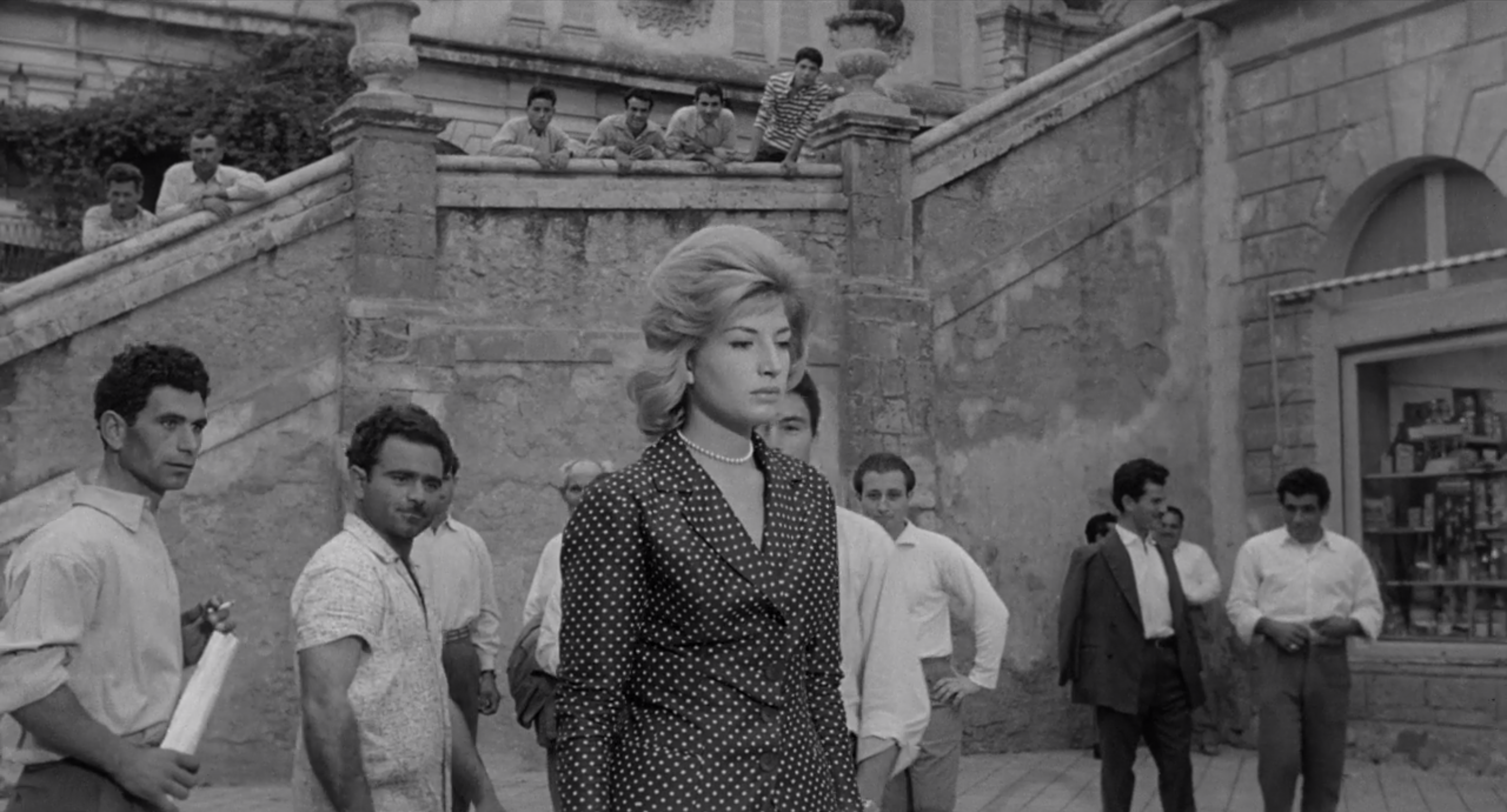
“I had the clip of that sequence on my phone,” Grobet says. “When we got to the location that day, with the help of a viewfinder and the clip, I figured out the [approximate focal length that] they used in 1960. The closest I had at the time was a 35mm — they might have used a 32mm, but it was pretty close. I traced the camera move and determined the length of the dolly, and with visual references, I matched as closely as possible to the actual clip. Besides the timing, which is not the same, I think the atmosphere and feel of the scene were captured pretty well.
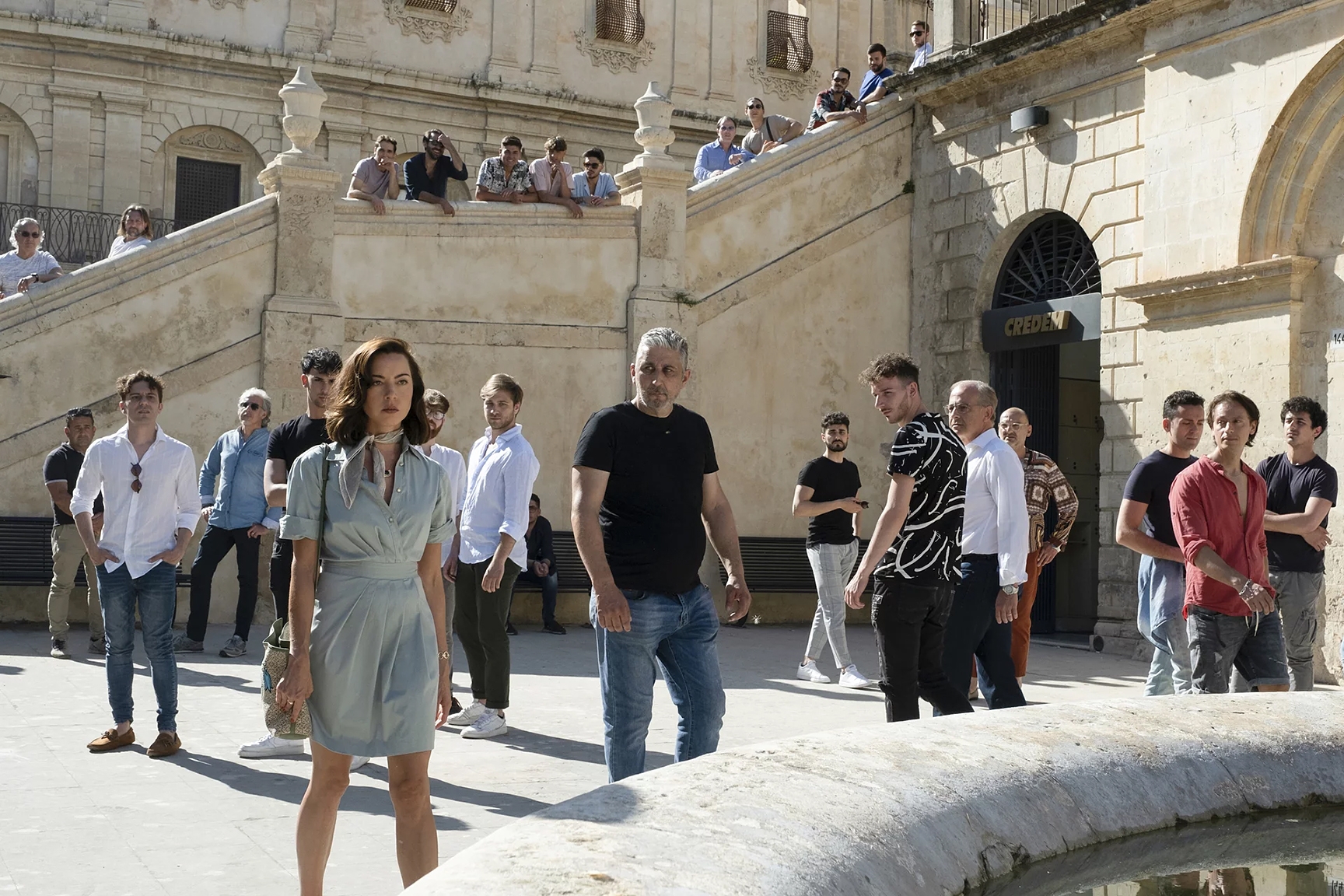
The Natural World
Grobet selected the Arri Alexa Mini and Panavision Primo lenses as his main camera package for the show. “Those choices are so subjective, but I felt that combination would fit the texture of the piece,” he says. “I love the feel of the Alexa Mini in conjunction with the Primo lenses. I got the film look and feel — which differs from the digital world — that was most to my liking.”
With Sicily’s natural landscape informing so many of the visuals, the ocean was particularly important. “One of the staples of the show is the ocean and the waves and the energy that brings,” Grobet says. “Of course, Sicily doesn’t have the waves you would get in Hawaii, but it was still a necessity to get the energy of the water.”
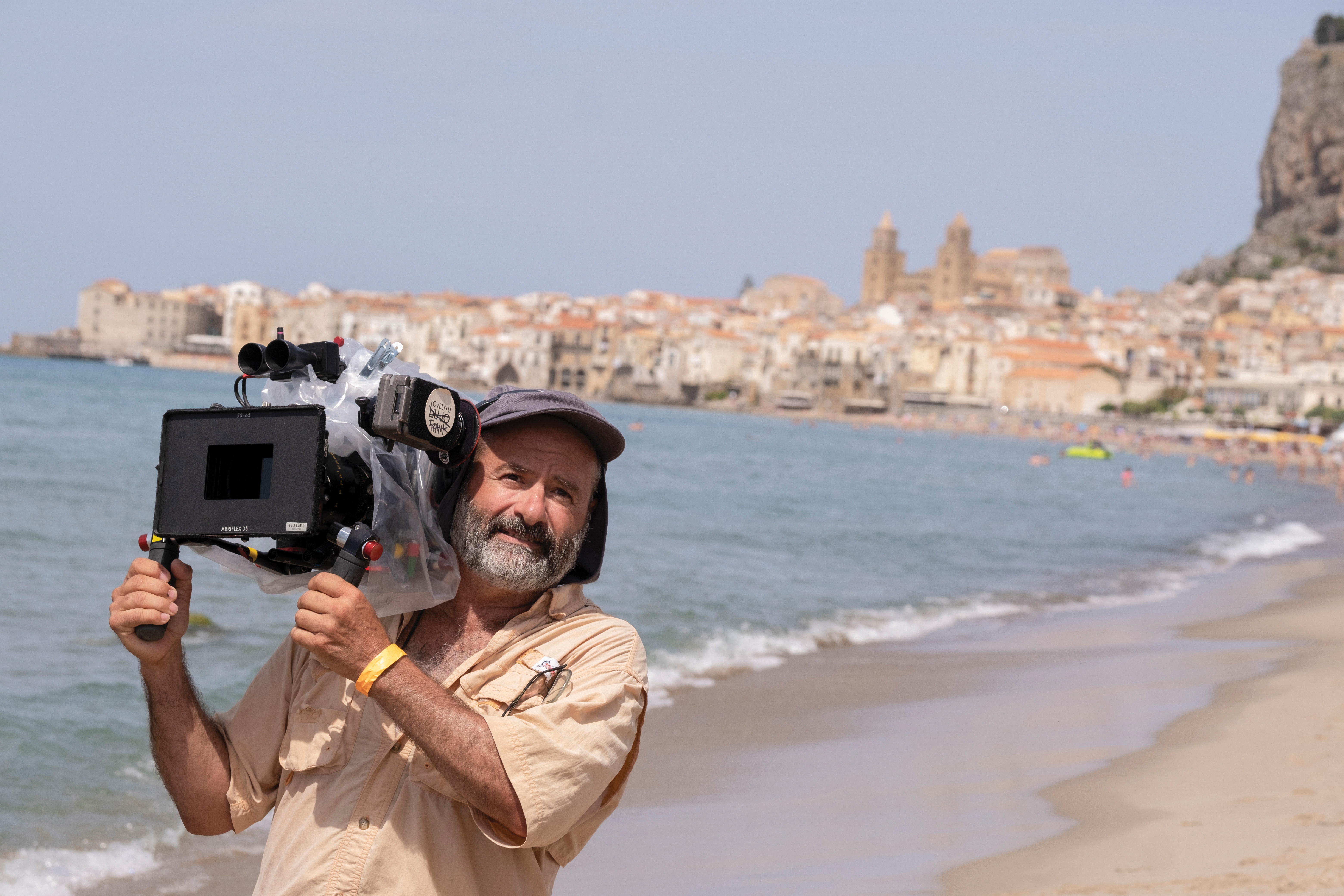
After testing several camera options for pool and ocean scenes, he opted for a Blackmagic Pocket Cinema Camera 6K, set to 4K capture, and 16-35mm and 24-70mm Canon EF zooms. The package “worked out really well because it’s compact, and the Nauticam housing is really easy to maneuver,” he says. “Our B-cam and Steadicam operator, Armando Avallone, is the one who would jump in the water to do most of the scenes with actors. We also had Maurizio Cremisini do some shots in the ocean.
B-Roll Bonanza
White notes that capturing as much B-roll as possible was integral to achieving believability. “I’m fortunate that Xavier has worked on both television shows and independent movies, [because] he understands getting as many kinds of setups as possible, really just hosing down all of the details that we can in a short amount of time,” the director says. “I’ve learned in editing that all of that becomes really useful, especially with our show, which takes place mostly in hotel rooms and at a restaurant. Having B-roll of the natural surroundings, and all the details of the hotels and the houses, just opens up the canvas. Otherwise, it can be very insulated and kind of claustrophobic.”
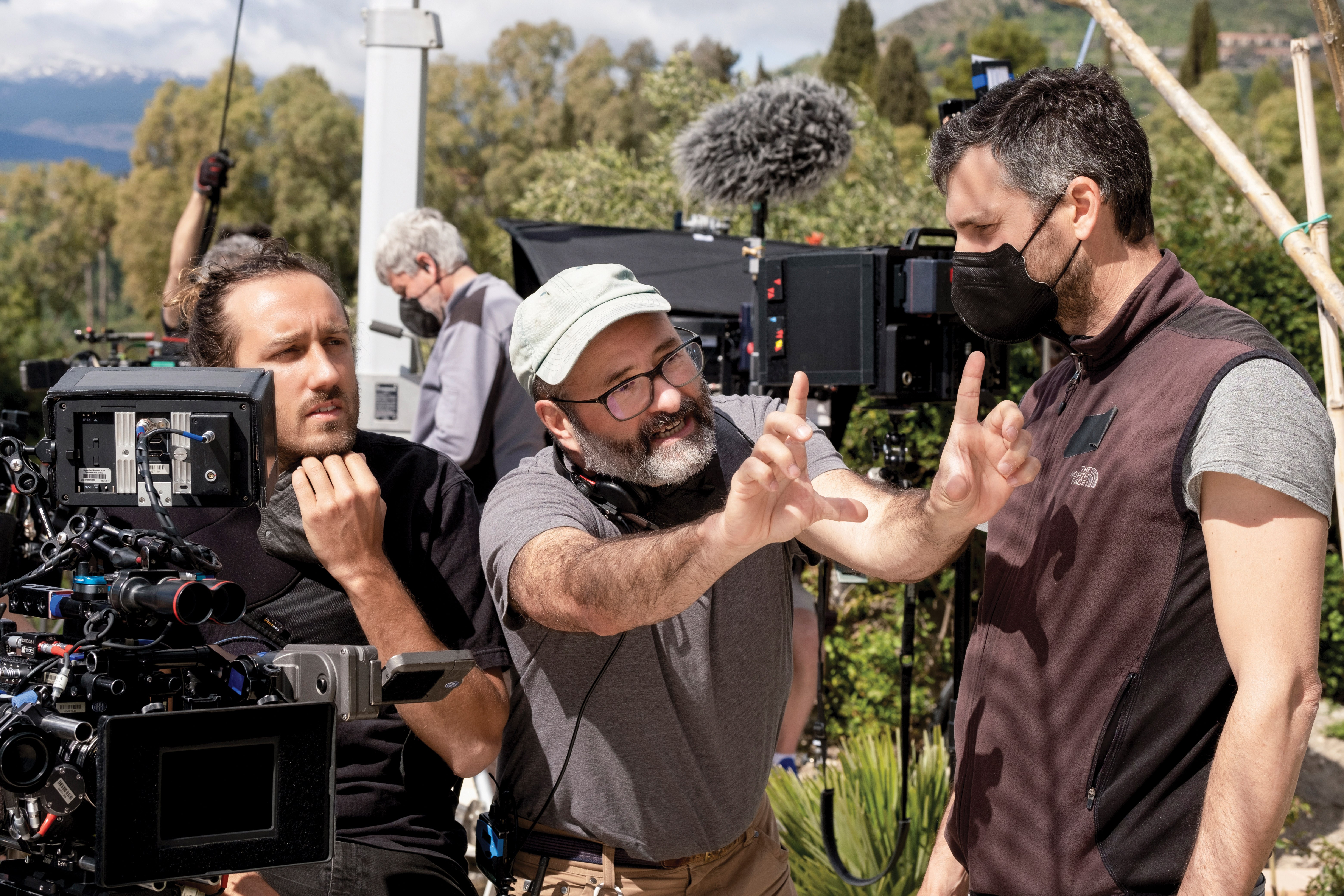
Grobet always had an eye on the natural environment. During prep, he would take his Sony a7S III out at night and film the moonlit ocean at 10,000 ISO. Serendipitously, one night he was able to capture Mount Etna erupting, and his footage made it into the show. The cinematographer adds that the a7S III was also used for a number of establishing shots with moonlight.
Grobet credits much of the atmospheric B-roll that permeates the series to A-camera operator Frank Larson, who often split off to shoot such material when the main unit moved on to another location. Larson also shot the show’s jet-ski and Vespa sequences.
Support System
Mutual respect and support helped ease the grind of production, according to White. “With movies, you sometimes have 100-day shoots, but you aren’t doing 420 pages of material,” he says. “It is so much content that it’s hard to hold it all, and you really end up leaning on your DP. We were just leaning on each other to physically get through it. Also, creatively, obviously, our operators and the rest of the crew kept us going.”
Grobet adds “a big thanks to the Italian crew — including our main focus pullers, Fabio Ciotto and Gian Claudio Giacomini, and gaffer Alex Bramucci and key grip Giorgio Pezzotti.”
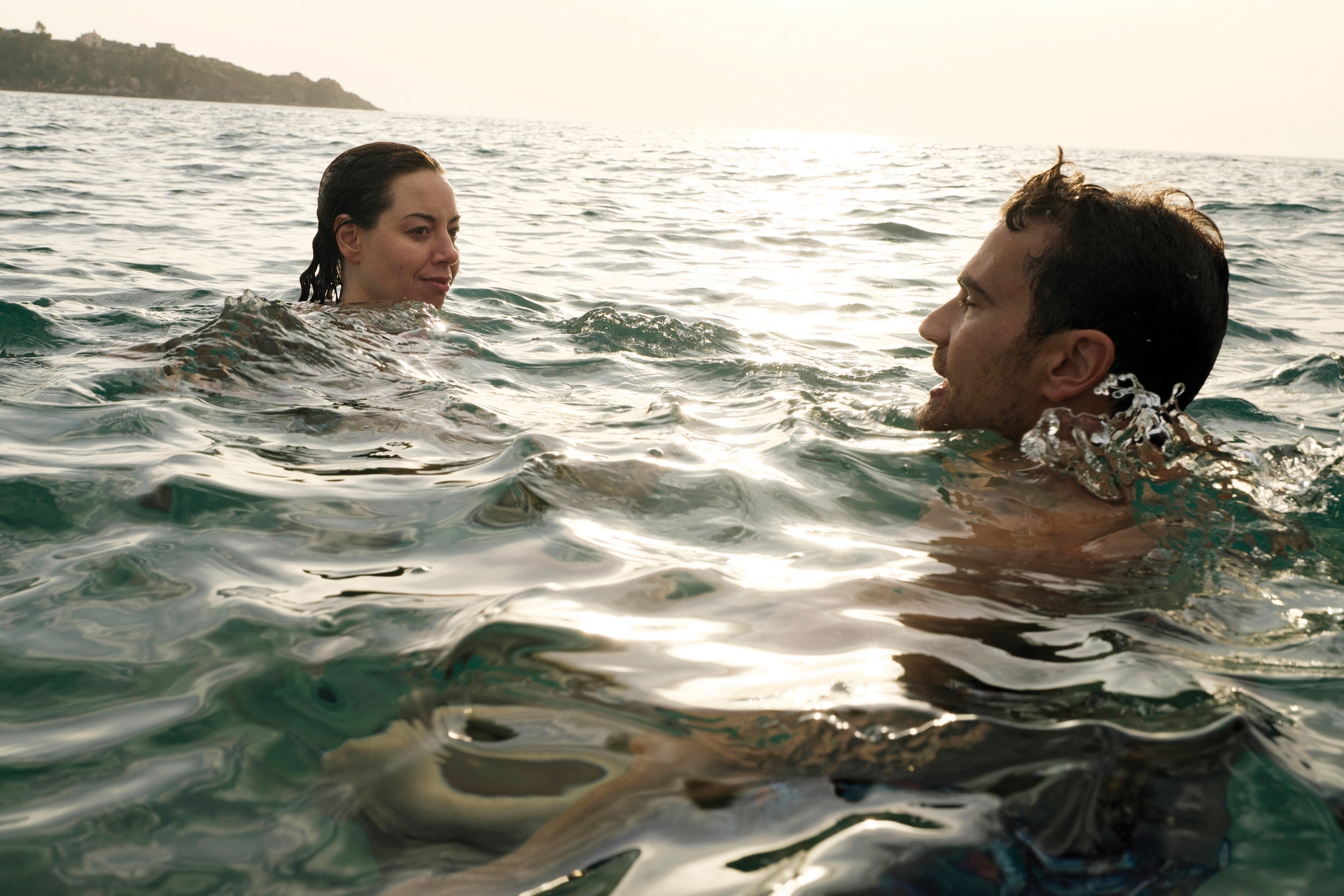
Weather and Emotions
Predictably, the local weather required careful planning and a lot of flexibility. “We had so many weather issues!” Grobet recalls. “One day we went down to the beach club, and the tide was so high that the whole set was gone — the water just blasted all over it. We had a lot of those days. It was very complicated. I guess it’s part of the energy Sicily has.”
For exteriors, Grobet did extensive shot listing that was often thrown out on the day due to the weather. “You try to play around as much as you can with where the sun’s going to be in order to benefit the scene and backlight the actors,” Grobet continues. “Sometimes you can’t do much about the weather; you have to shoot the day, and sometimes you make mistakes. It’s always a struggle to shoot outdoors.”
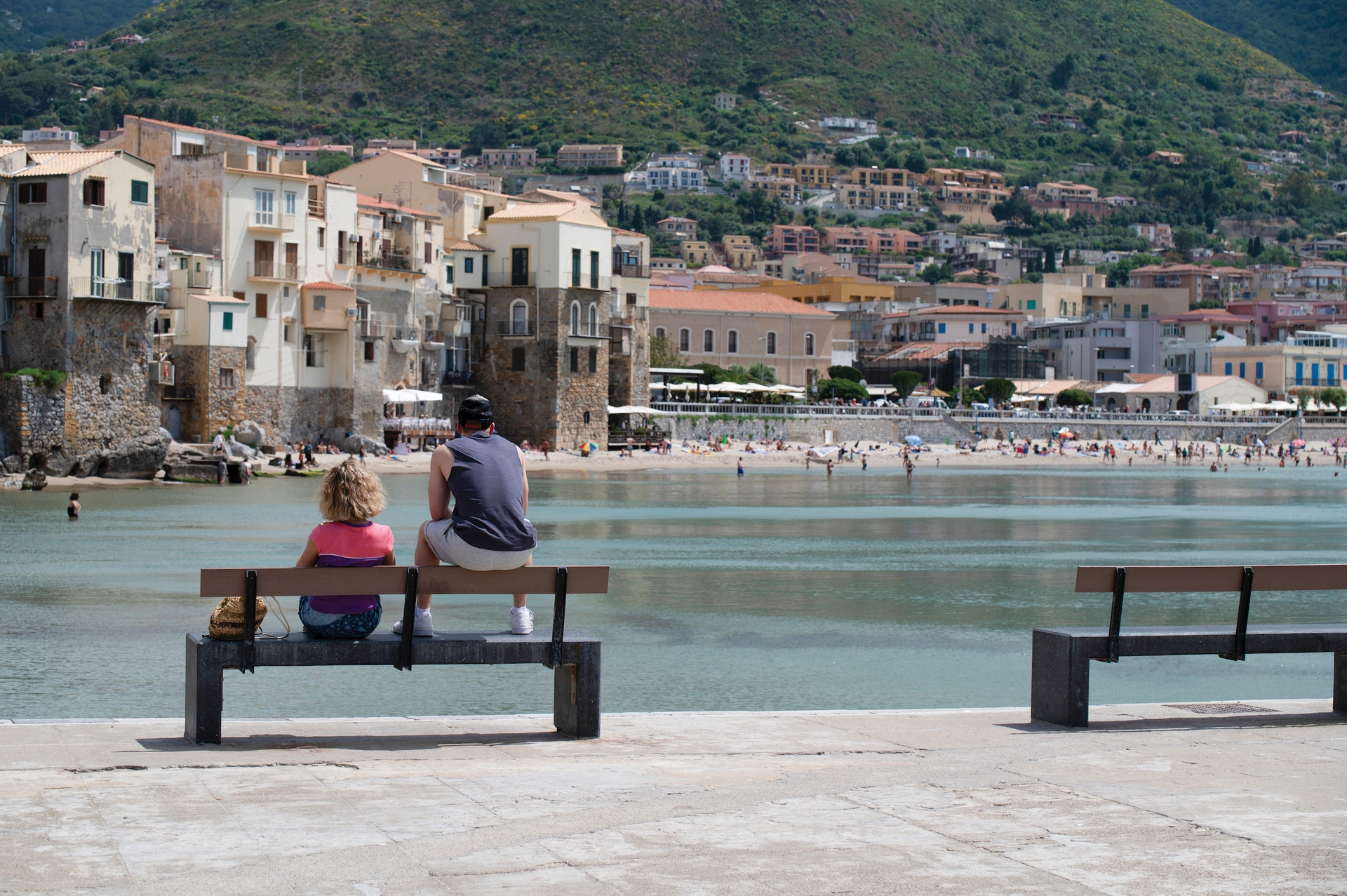
Almost as volatile are the power dynamics constantly at play in the show. To subtly underscore those moments, Grobet “always liked the camera to be subjective, to add to the psychology of the character or the situation,” he says. “When we get to these kinds of scenes where you have to support the psychology of what’s happening, you want the shots to put the audience in that emotional place.” For example, he notes, “I like when we shot the party scene where the characters have done drugs and jump in the pool. For that scene, I lit it with a couple of Arri [SkyPanel] 360s as moonlight, but changing colors throughout the scene — my version of being on ecstasy/‘Molly.’
“I like that the show has this quality where you really can’t tell what the genre is,” Grobet adds. “It’s a little bit of mystery, but it’s also fun, and it can be like reality or like drama.”
An Operatic Finale
(Editor’s note: spoilers ahead.)
One sequence that defied expectations appears in the series finale, when Tanya realizes the men with whom she is vacationing on a yacht intend to kill her. She decides to kill them first. “I see that as opera, a reference to Madama Butterfly,” Grobet says. “You are guided towards what you think is going to be the end, where she kills everyone, and then she ends up dying herself in the most ridiculous way.”
Set aboard a yacht at night, this scene was especially challenging to shoot because the boat is supposed to be anchored in the middle of the bay. Says Grobet, “We storyboarded that scene clearly, and I knew Mike wanted [Jennifer] to be coming out of the cabin shooting like crazy, and then the aftermath of what has happened catches up with her.” This required operator Larson to lead Coolidge out of the cabin of the yacht in a handheld shot through a very tight space.
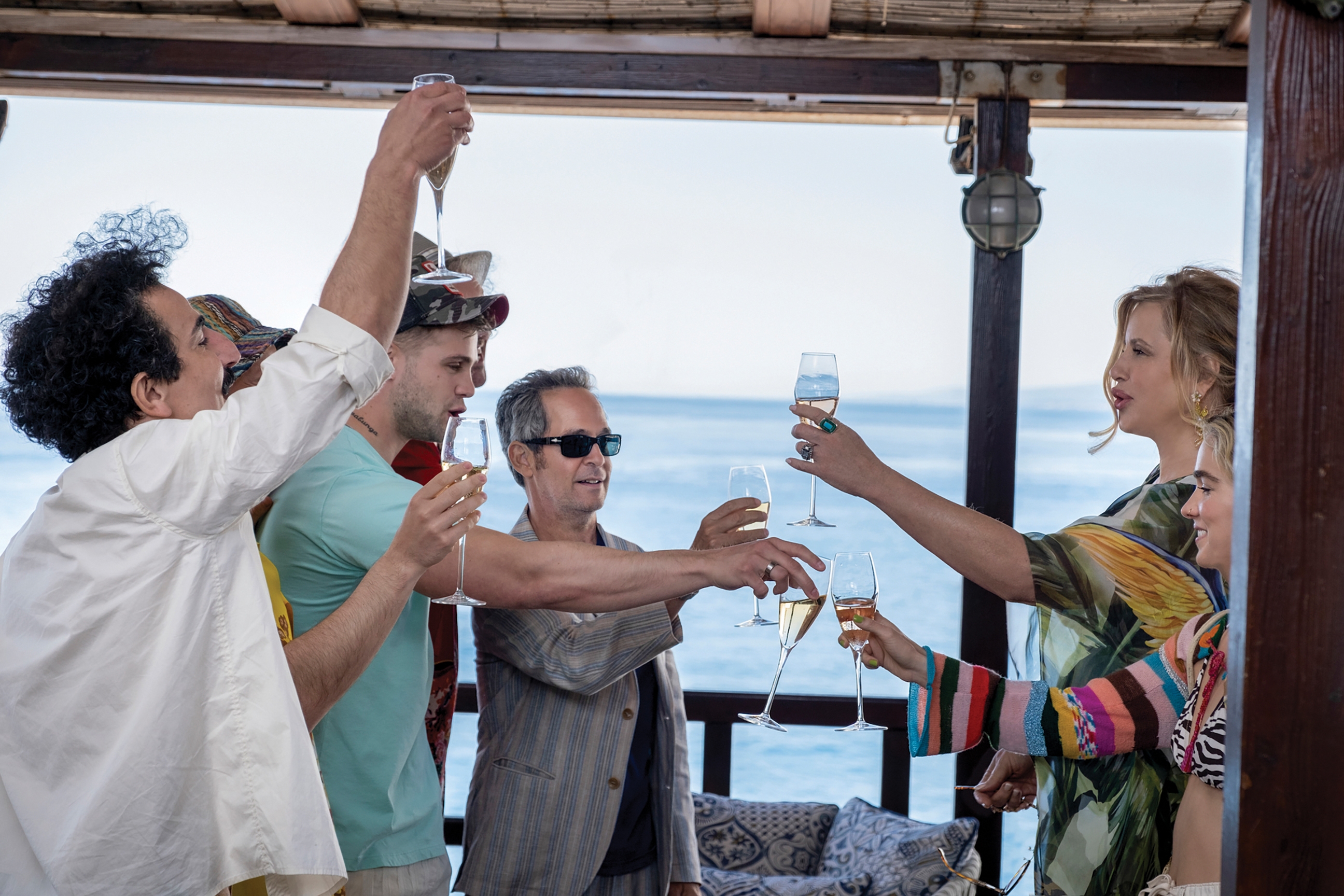
Establishing shots of the yacht anchored in the bay were captured first, and then the boat was moved close to a dock and re-anchored. “I was able to light from a crane on the shore if need be, but most of the sequence was shot using the house lights of the boat,” Grobet recalls. “We rigged a couple of Kino Flos in order to have some control, but the boat was so narrow there was no way I could light with much more than what was rigged into the boat. It was challenging to have a handheld camera come out of the cabin and not hit all the walls!”
In the end, he says, simplicity was key. “We planned the sequence in the water where she falls and dies, and we even shot with an underwater camera. But what ended up in the cut, which I think is genius, is just the wide shot. I think it adds to the absurdity of that scene.”
Grobet notes that the underwater moment was saved for a slow-motion sequence “that was done later on by Marco Pasquini in a swimming pool in Palermo.
“For the entire show, you’re trying to figure out who’s going to die, and then you see Tanya killing all these people, and you think that’s it,” the cinematographer adds. “So, what eventually happens is a surprise.”
A Unified Vision
Carefully pacing the mystery while not giving too much away visually was important to Grobet. “The good thing about this show is that Mike wrote everything, Mike directed everything, and I was involved in all the episodes. We worked as if we were shooting a long movie, not a TV show. We really had the piece completely mapped out.”
White is effusive about Grobet’s contributions to the project. “The thing about Xavier that is really unique is that he really is inside the story,” he says. “Xavier is watching the performances. He’s laughing. He’s the greatest audience for these actors.”
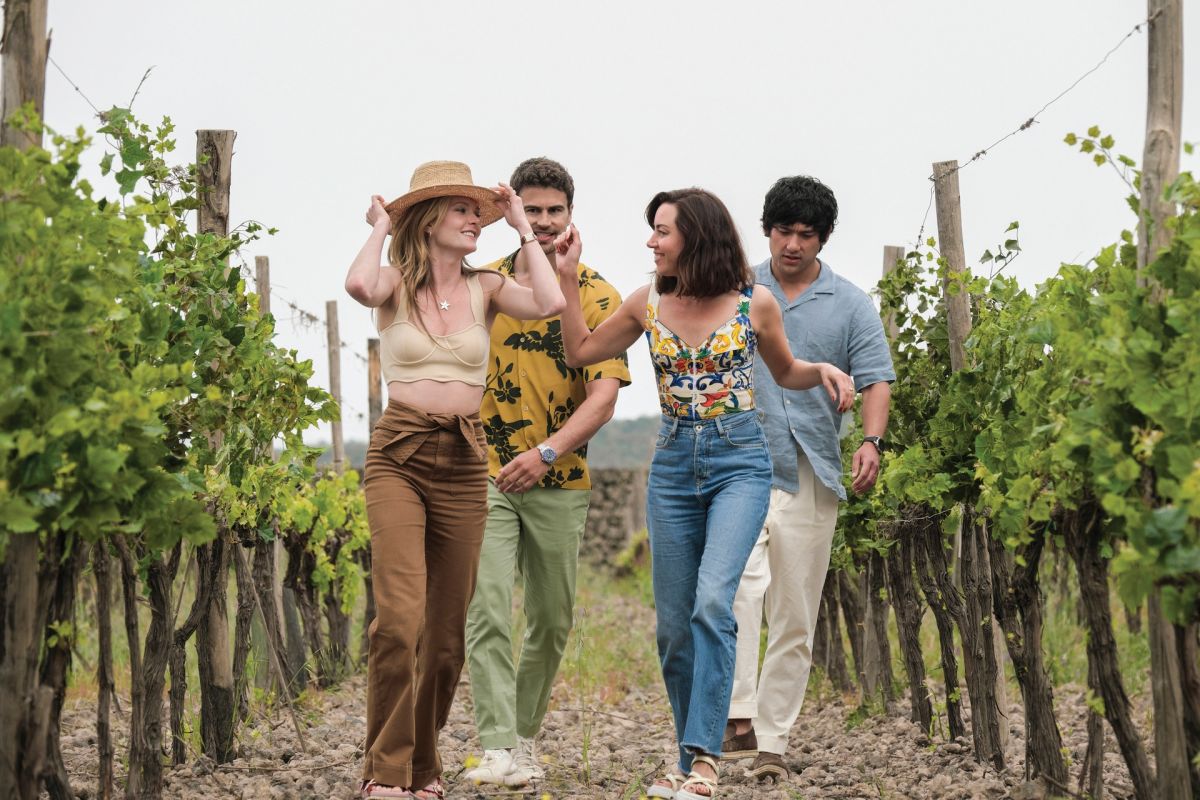
1.78:1
Cameras | Arri Alexa Mini, Blackmagic Pocket Cinema Camera 6K, Sony a7S III
Lenses | Panavision Primo, Canon EF zoom






